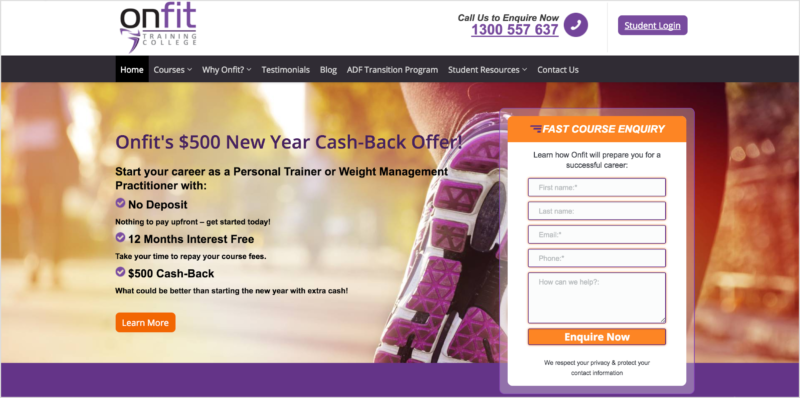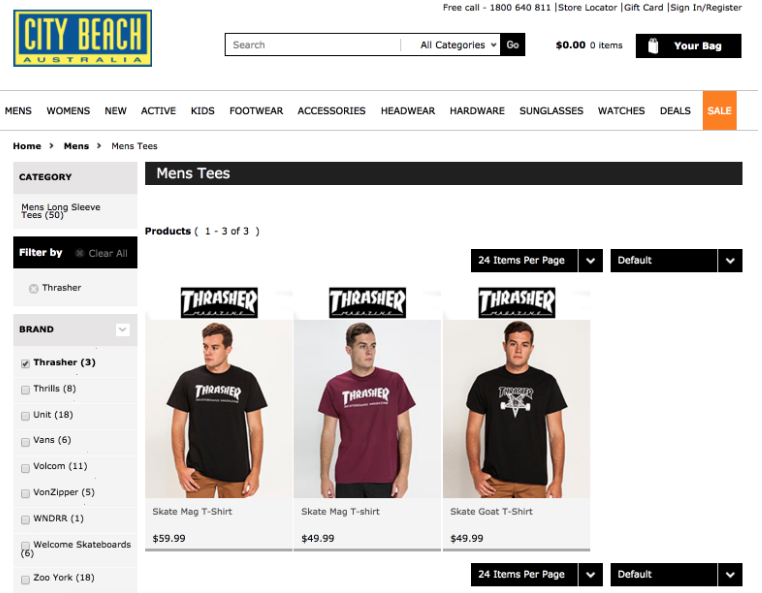How to use consumer bias to maximise conversion rates
Understanding where your customer's biases lie and targeting them at point of sale is the secret to sealing the deal at the check-out, explains Brodie Clark in this guest post.
Conversion rate optimisation doesn’t need to be a logical process.
Often, it is an illogical decision made by the customer that leads to the sale…
Knowing what a cognitive bias is and how to incorporate it into your landing page design and copy is the smart approach.
Although if you don’t understand how the illogical brain works – the one that decides without you – then you could be left confused and disappointed with results.
What is a cognitive bias?
A cognitive bias describes the inherent thinking errors that humans make in processing information. Two important cognitive biases of relevance are the primacy and recency effects.
The primacy effect states that items at the beginning of a string of information are more easily remembered, or will be more influential than others presented later.
Whereas, the recency effect relates to items at the end of a string of information being easier to recall, having the greatest effect in repeat messaging.
How first and last exposure works
Applying cognitive biases correctly, according to clinical psychologist Dr. Matthew Worthington comes down to answering this question: Why are we more likely to remember the first and last thing?
In order to achieve efficiency as the brain processes information, our brains draw closer attention to the initial and the final piece of information presented.
This is a strategy to ensure that the time spent focusing energy on this information is rewarded. Our brains want to be reciprocated for using that energy. As Dr. Worthington says, our brains are “economical in terms of energy burn”. Holding unnecessary information is inefficient.
So we, as marketers, can take advantage of this perception bias by providing the information we want the customer to retain, first and last, and that this information conveys a benefit to the customer.
Using the primacy effect in ecommerce
The primacy effect can be applied to ecommerce when comparing similar items. For instance, a product category made up of several similar products could be an application.
Above are three products which are quite similar. The first t-shirt is a simple and classic design not immediately obviously different in any way to the two following shirts on offer – although it is 20% more expensive than the other shirts.
The primacy effect comes into play through reciprocation. The customer is inclined to direct their focus to the first product, where City Beach has reciprocated by supplying the visitor with the frequently preferred option.
According to Google Analytics product performance data, sourced by Alpha Digital, the first product generated the highest revenue of the three shirts. This goes to show that the order of presentation can be an important contributing factor in the selection process.
Using the recency effect in lead generation
The recency effect relates well when formulating a list of words, with a greater likelihood of remembering the words heard last, alongside repeat messaging. For instance, communicating your USP (Unique Selling Proposition) as a list of benefits could be an application option.

The recency effect, along with an offer-specific landing page, led to an improvement in course sign-ups
Here, there are three benefits listed, signified by the ‘tick’ symbol. The final benefit states you will be given a $500 Cash-Back – being an irresistible bonus for many.
The recency effect comes into play by allowing the customer to process this information, just before the ‘Learn More’ call-to-action (CTA) is selected. The customer is inclined to view the service as more favourable due to the added bonus offered by Onfit Training College.
In this case, the incorporation of the recency effect, along with an offer-specific landing page, has led to an improvement in course signups.
Conclusion: use known cognitive biases to guide testing
Take a moment to consider that the people coming to your website can be subject to bias in information processing.
However, remember that cognitive biases such as the primacy and recency effects can’t work on their own. Having the right tools at hand for Conversion Rate Optimisation (CRO) is an important first step.
Our efficiency-seeking minds can often work in predictable ways, as is evident through these effects. When we design our product categories and USP’s with psychological principles in mind, the potential for conversion rate success is unmatched.
Are you ready to understand your customers better? Get in touch with Alpha Digital to learn more about our approach to CRO.
Brodie Clark is an SEO specialist at Alpha Digital






Time to stop describing a cognitive bias as an error. Two down, 170-odd to go…
https://en.wikipedia.org/wiki/List_of_cognitive_biases
User ID not verified.
It definitely can lead to errors in thinking though. Great intro to a topic that clearly has a lot of depth
User ID not verified.
Glad you’ve read a book. Issue is lots of the biases contradict eascj other. Eg we have exremity avoidance. We prefer items in the middle not the ends. How does that compare with primacy and recrncy biases?
Just test and learn and adapt. Fuck the cognitive biases. Very few have been replicated anyway.
User ID not verified.